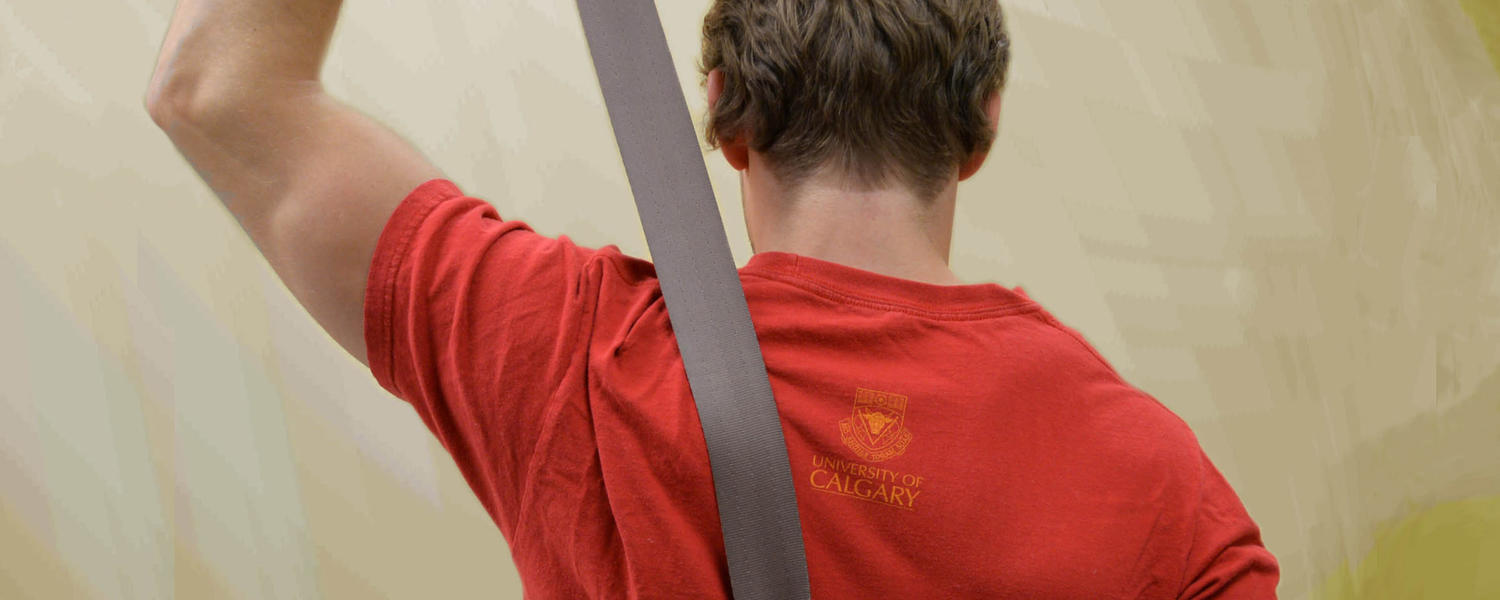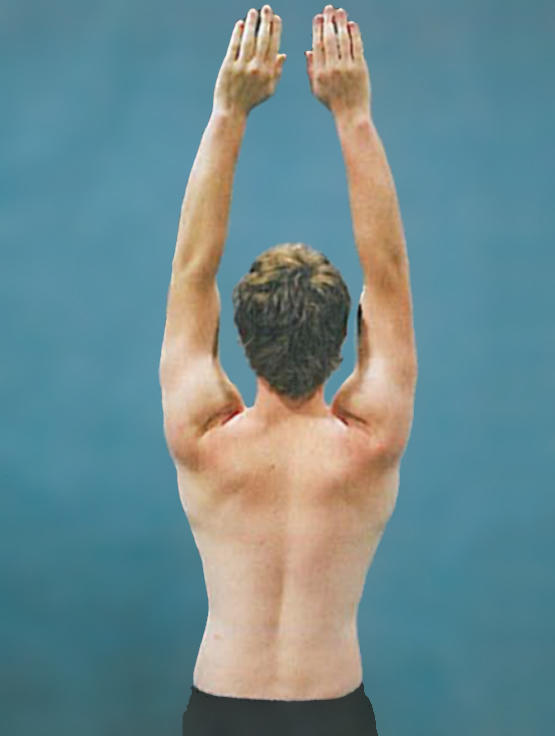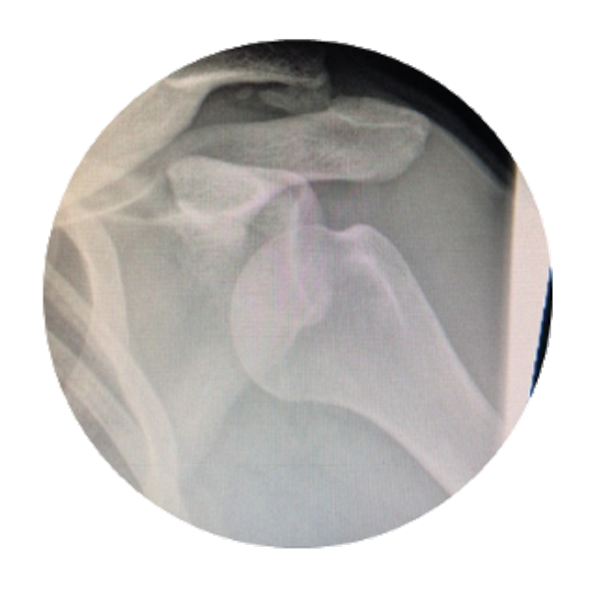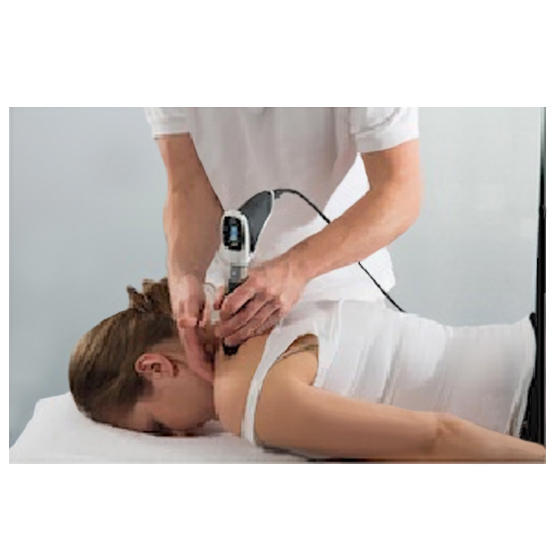
Shoulder Check
Causes and treatments for non-arthritic shoulder pain
Treatment of the shoulder joint can be quite unpredictable. Patients can present with widely different pain for the same apparent injury. Furthermore, studies have shown that non-operative treatment can be equally or more effective than surgery.
Medical Response to Shoulder Injury
The first step is a physical exam, which would include the following:visual inspection, palpation (ie., testing for tenderness, temperature, and tone), and range of motion. The range of motion is simple: the patient will demonstrate movement, such as holding the arms above the head (see photo).
Special tests will follow, such as rotator cuff tests, impingement tests, biceps tendon tests, and stability tests. Finally and only in more unusual cases, there could be neurovascular testing.
Treatment considerations include duration of symptoms. severity, patient occupation, and other underlying factors (mechanical loads, training error, malalignment, technique). Finally, the individual patient's health, goals, and activity levels are considered.
Medical treatment options include:
- Ice/cryotherapy
- the use of a sling
- topical treatments (NSAIDs, Anesthetics, Capsaicin, Menthol)
- oral treatments (Acetaminophen, Muscle relaxants, Opioids)
- injectables (ie Cortisone)
- Platelet-rich plasma (PRP)

Surgical Response to Shoulder Injury
Rotator cuff tears do not automatically require surgery. Furthermore, there is no guarantee that a rotator cuff injury will greatly impact quality of life. For some patients, a small tear can result in high pain levels. For others, a large tear will cause very little discomfort. In fact, tears can be present with NO symptoms.
Before surgery, initial Imaging will use different diagnostic tools.
1. X-rays. These will be use scan bones to see if any are broken or fractured. X-rays also are used to scan joints for dislocations or subluxation/separation.
2. Ultrasound.
3. MRI
The Sport Medicine Centre has been a leader in testing non-surgical treatment of shoulder injury as many patients can improve greatly without surgery.

Physiotherapy of Shoulder Injury
Physical therapy of shoulder injury includes posture retraining, movement retraining, and strengthening. It is very important to maintain good form.
Strength exercises are necessary, but a common mistake is to try to do to much, too soon. We recommend that patients focus on good form, and to remember that exercises may need to be divided up over longer time periods. Strength exercises should be done until the patient is tired, NOT until the patient is in pain.
Regardless of whether surgery is necessary, physical rehabilitation is a must. Preoperative benefits include the patient being stronger going into surgery, and avoiding developing a stiff or frozen shoulder.
Other treatment methods are:
- Manual therapy
- Acupuncture and dry needling
- Shockwave therapy

